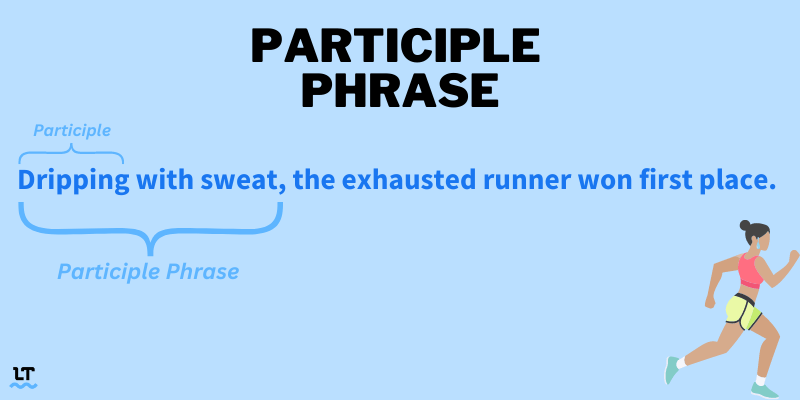Verbs Ending in “–ing”: Mastering Present Participles in English
When it comes to verbs, there is so much more you need to know than the fact that they represent actions or states of being. For instance, you should be aware that there are different forms of verbs, each used for specific purposes.
A present participle is a verb form in which you add “–ing” to the infinitive. Present participles are used in the progressive (continuous) tenses, but can also function as adjectives.
- My baby brother was crying all morning.
- The crying baby woke up the whole house.
Below, we’re going to review everything you need to know to master these particular verb forms—present participles—including their definition, usage, and examples. You can also use LanguageTool’s Grammar Checker to make sure you’re using verb tenses correctly.
What Is a Present Participle?
A present participle is a verb form that ends in “–ing” and is used in progressive tenses. Remember, progressive tenses (also known as continuous tenses) express ongoing or in-progress actions or states at a specific time in the past, present, or future.
Present participles are typically formed by adding “–ing” to the infinitive form of a verb.
Present participles can also function as adjectives—that is, words that modify nouns and pronouns.
Present Participle Examples
Here are a few more examples of present participles.
| Present Participles in the Present Progressive Tense | |
|---|---|
| Sing + “–ing” = singing | She is singing in the choir. |
| Study + “–ing” = studying | They are studying. |
| Work + “–ing” = working | Paul is working on a new project. |
| Draw + “–ing” = drawing | He is drawing his favorite movie character, |
| Absorb + “–ing” = absorbing | The cloth is absorbing the spilled liquid. |
| Present Participles as Adjectives | |
| Fall + “–ing” = falling | The falling leaves covered the ground. |
| Chirp + “–ing” = chirping | The chirping birds have become my friends. |
| Miss + “–ing” = missing | We looked for the family’s missing cat. |
| Buzz + “–ing” = buzzing | The buzzing mosquito drove me crazy. |
| Glow + “–ing” = glowing | The glowing neon lights were spectacular. |
Forming Present Participles
Generally, all you have to do is add “–ing” to the infinitives of both regular and irregular verbs to form the present participle.
There are some exceptions, of course.
1. If a verb ends in “–e,” drop the “–e,” and add “–ing.”
2. If a verb ends in “–ie,” drop those two letters, add a “–y,” and then add “–ing.”
3. If a verb ends in a consonant with a single vowel before it, double the consonant and add “–ing.”
4. If a verb ends in a consonant but has multiple vowels beforehand, do not double the consonant.
These are just some of the few guidelines to follow when adding “–ing” to words. Of course, because English is English, there are many exceptions and irregular forms that have to be memorized individually.
In UK English, the general rule is to double the “L” and add “–ing.”
- We were marvelling at the artwork.
In US English, however, the “L” is usually only doubled when the final syllable is stressed.
- He was controlling the drone from afar.
If the final syllable is not stressed, then the “L” does not get doubled.
- Erica will be modeling for her favorite fashion line.
Present Participles in Participial Phrases
Participial phrases are a group of words that start with a participle and contain other parts of speech. They behave like adjectives in the sense that they modify nouns, pronouns, and noun phrases.
Here are a few examples of participial phrases that contain a present participle.
Keep in mind that if the participial phrase is at the start of a sentence, it should be separated from the main clause with a comma.
A participle phrase is a group of words that starts with a participle and is followed by other words from different parts of speech.
Participial phrases can also be found in the middle of a sentence. They may appear within commas unless they provide important information.
Keep in mind that present participles should be placed directly next to the noun it’s modifying to avoid nonsensical sentences.
The placement of the participle phrase in the sentence above can be interpreted as the bus was running down the street. Instead, it should be rewritten as:
What’s the Difference Between Gerunds and Present Participles?
A gerund is also formed by adding “–ing” to the infinitive. However, whereas present participles can function as adjectives, gerunds only function as nouns.
Using Present Participles Correctly
If you want to master verbs, then you have to thoroughly understand what present participles are and how to use them.
Using LanguageTool as your writing assistant ensures proper use of present participles. This multilingual spelling, grammar, and punctuation checker also corrects various types of errors and optimizes your writing by improving word choice and rephrasing your sentences.
Give it a try!

